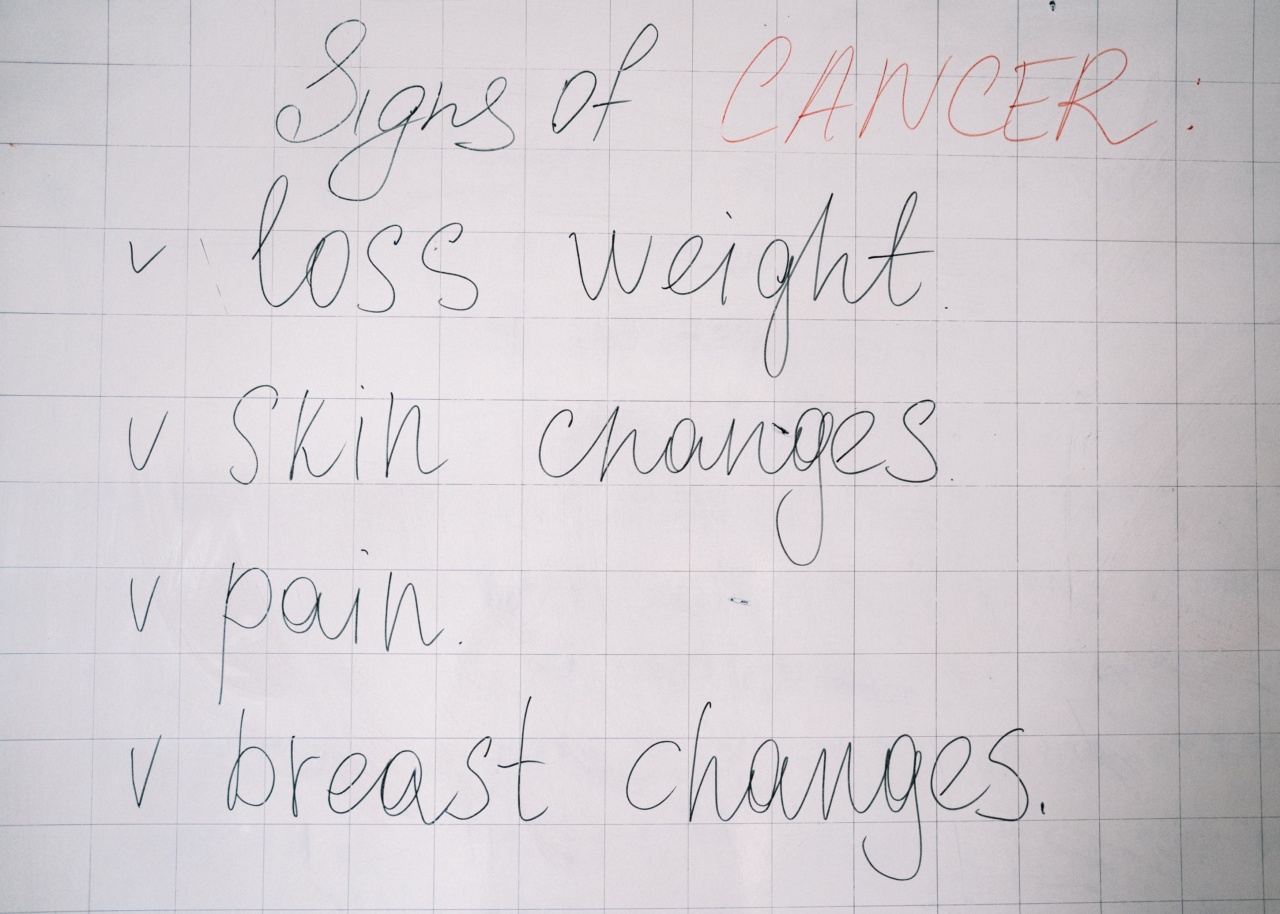Cancer in children is a devastating diagnosis that no parent wants to hear. While childhood cancer is generally rare, it is important to be aware of the signs and symptoms as early detection can significantly improve outcomes.
In this article, we will explore the various signs and symptoms of cancer in children, highlighting the importance of recognizing these early warning signs and seeking prompt medical attention.
1. Unexplained Weight Loss
One of the common signs of cancer in children is unexplained weight loss. If a child experiences a significant and unexpected weight loss without any apparent reason, it may be a cause for concern.
This could be an indication of various types of cancer, such as leukemia or neuroblastoma.
2. Fatigue and Weakness
Constant fatigue and weakness are often overlooked symptoms in children. However, if a child seems excessively tired, lacks energy, or experiences unexplained weakness, it could be a sign of an underlying health issue, including cancer.
3. Persistent Fever
While children frequently experience fevers due to common illnesses, a persistent or recurring fever that does not subside with usual treatments should be investigated further.
Fever may sometimes be the only apparent symptom of certain types of childhood cancers, such as lymphoma or leukemia.
4. Bone and Joint Pain
Unexplained and persistent bone or joint pain that does not go away should not be ignored. These types of pain can be indicators of bone cancers like osteosarcoma or Ewing sarcoma.
If a child complains of pain or limps without any obvious cause, it is important to consult a healthcare professional.
5. Abdominal Pain and Swelling
If a child experiences persistent abdominal pain or swelling, it is crucial to seek medical attention. While there can be various causes for these symptoms, they could also be linked to pediatric cancers, such as Wilms tumor or neuroblastoma.
It is better to have a professional evaluation to rule out any serious underlying conditions.
6. Changes in Vision
Parents should be vigilant if their child complains of vision problems. Unexplained vision changes, such as blurred or double vision, may be associated with cancers like retinoblastoma.
Prompt evaluation by an ophthalmologist can help diagnose and treat such conditions at an early stage.
7. Frequent Infections
Repeated or persistent infections, such as respiratory infections, ear infections, or skin infections, can sometimes be a sign of an underlying immune system dysfunction.
Certain types of childhood cancers, like leukemia, can depress the immune system, making children more susceptible to infections.
8. Easy Bruising or Bleeding
If a child develops easy bruising or bleeding without any known cause, it may raise concerns.
Unusual bleeding from the gums, nosebleeds that are difficult to stop, or frequent bruises can be associated with blood disorders or certain types of childhood cancers, like leukemia.
9. Lumps and Bumps
Discovering an unexplained lump or swelling anywhere in the body should never be ignored. While many lumps are harmless, they can sometimes be indicative of serious conditions, including cancer.
It is always recommended to have lumps and bumps evaluated by a healthcare professional.
10. Behavioral Changes
Persistent and unexplained behavioral changes in children, such as sudden mood swings, loss of appetite, or withdrawal from activities, could signal an underlying health issue.
While these changes may be caused by various factors, it is essential to consider the possibility of cancer and seek medical advice if needed.
Conclusion
Recognizing the signs and symptoms of cancer in children is crucial for early detection and improved outcomes. Parents and caregivers should be vigilant and consult a healthcare professional if any of these signs persist or cause concern.
Early diagnosis and treatment increase the chances of successful treatment and recovery in children with cancer.




























